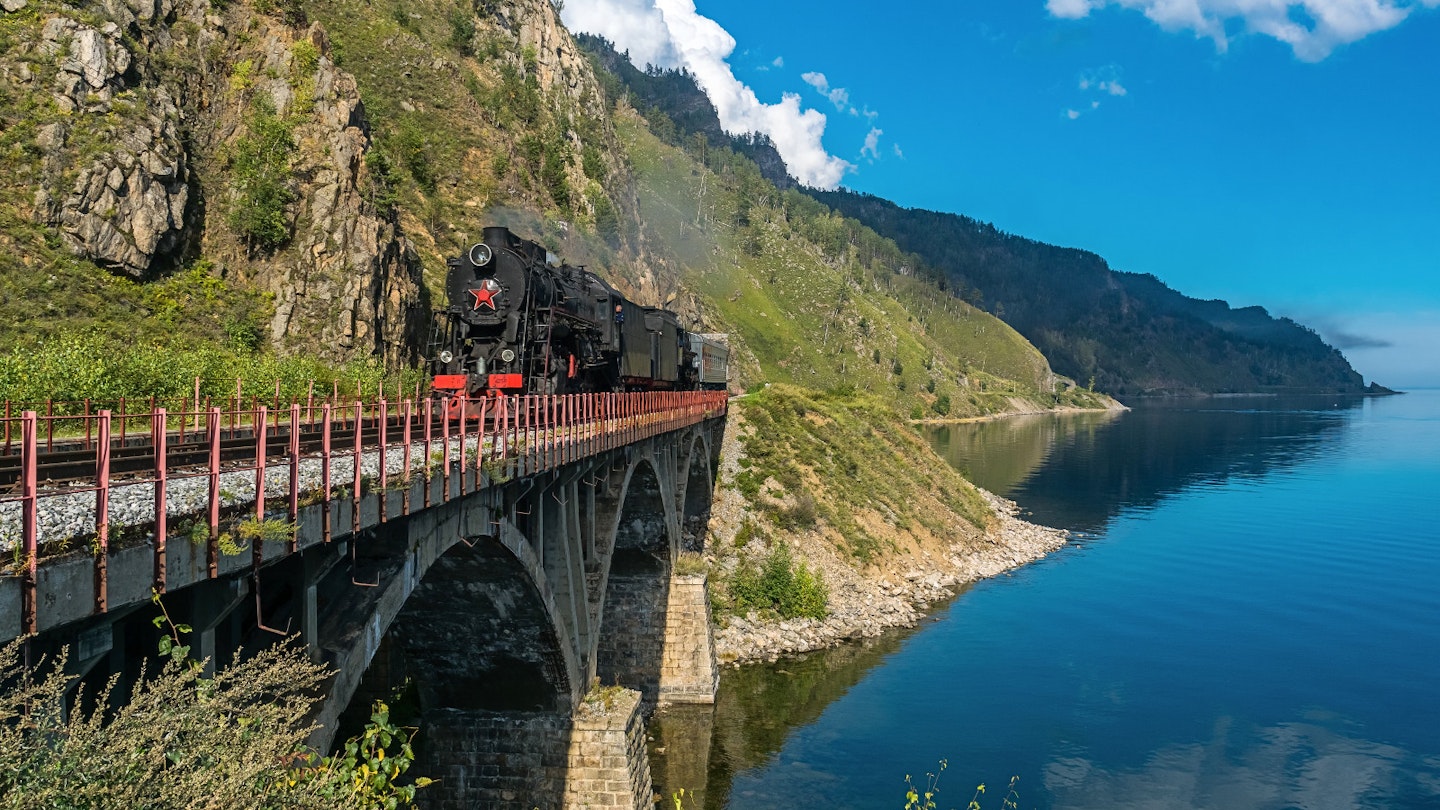Experience the Trans-Siberian Railway with GoTravelDaily
You might visualize the Trans-Siberian as a lonely, melancholic train journey through a snowy plain. However, it’s better represented as a connection of fascinating people, who pass travelers from one to another along the route and offer the best of Siberian hospitality.

Traveling from Europe on the Trans-Siberian Railway, your first introduction to the scene comes right after you run out of beer and conversation while crossing the border between Europe and Asia on the (at least) 26-hour journey from Moscow to Yekaterinburg. Here, in the capital of the Urals, head straight to Ekaterinburg Guide Centre, a company run by the eminent Konstantin Brylyakov. There’s a range of tours and activities on offer, including Russians’ favorite pastime – mushroom picking. The highlight is a visit to the ancient village of Koptelovo, where a group of local babushkas run a program themed on the Russian colonization of Siberia, involving singing and a majestic dinner in the 300-year-old izba of babushka Katya.
Dive into Ural’s Culture
If you desire a deeper immersion in the culture of the Urals, visit the ancient Old Believers’ village of Byngi (95km from Yekaterinburg), where German expat Stefan Semken runs a brisk operation in his riverside farmhouse. Here, accommodation is available inside the izba as well as in yurts. A local babushka choir often performs at dinnertime, providing an evening of emotional ballades and playful chastushki (couplets).

Adventure in Krasnoyarsk
Hop on the train and in no less than 33 hours you’ll arrive in Krasnoyarsk, a significant industrial city on the banks of Siberia’s greatest river, the Yenisey. Russia’s most visited national park, Stolby Nature Reserve, is within the city boundaries, easily accessible on your own. However, your experience will be enriched if a local guide, Anatoly Bryukhanov (also known as SibTourGuide), accompanies you on the trek through the foothills of Sayany mountains, characterized by whimsical erosion forms known locally as stolby (pillars). Anatoly also invites people to his dacha (countryside cottage) for a day filled with fun and cross-country skiing.
A Stop at Tayshet
After another train journey of seven hours, you’ll reach Tayshet, where the railway forks. The main Trans-Siberian railway goes south, while the BAM railway continues directly east. The best reason to stop at this former Gulag prison camp is Igor Shalygin, a former teacher who operates a delightful homestay and provides tours of the area dotted with repurposed Gulag barracks and cemeteries where Russian political prisoners and ordinary individuals found their final rest. This area features beautiful spots, especially along small rivers that cut through the thick taiga forest. A highlight here is the banya (traditional bathhouse), administered by the host, which is a refreshing treat after long hours on the Trans-Siberian train – or for many, a much-needed experience after biking across the wilderness.

Journey to Irkutsk
Irkutsk, the gateway to Lake Baikal, is about 12 hours from Tayshet. A veteran of the local independent tourism scene, Baikaler’s Jack Sheremetoff is a true Siberian pioneer who established his hostel operation alongside the first Western tourists two decades ago. In addition to his well-known hostel in Irkutsk, Jack operates a more eco-friendly log house in Listvyanka, the closest shore of Baikal to Irkutsk. From here, you can embark on a trekking expedition with Baikaler guides atop the lake’s stunning ice shield in February and March or along the Great Baikal Trail during the summer months. Additionally, Jack organizes trips to Olkhon Island year-round.
Jack’s former employee and talented guitarist Denis Sobnakov leads similar treks from Irkutsk and operates an excellent hostel across the lake in Ulan-Ude. This town, another eight hours east by train, is known for the iconic large head of Lenin in its main square. It serves as a base to explore Baikal’s eastern shore as well as the rich landscape of Buryatiya, characterized by rolling grass-covered hills, blue lakes, Buddhist temples, and an intriguing ethnic mix. Various cultural activities and tours are offered in local villages from both communities, including food sampling and traditional choir singing.

Venture to Severobaikalsk
If you wish to deviate from the main Trans-Siberian route, there are options for deeper exploration into the taiga wilderness. At the northern tip of Lake Baikal, reachable by plane or via the BAM railway from Tayshet or Tynda, the town of Severobaikalsk is home to the Maryasov family and Rashit Yakhin, a veteran of BAM construction and the local adventure travel scene. Both can guide travelers to hot springs and along the scenic yet remote Frolikha trail, as well as to a camp of Eveny reindeer herders.
On the northeastern shore of Lake Baikal, national park ranger Aleksander Beketov operates a homestay for adventurous travelers who reach the stunning Barguzin Valley. He organizes tours of the surrounding area, including Svyatoy Nos peninsula. For visitors who have ventured this far, Beketov’s banya serves as both a unique bathhouse and a museum of banya craft, offering a perfect blend of purification and enlightenment in the heart of Asia!





